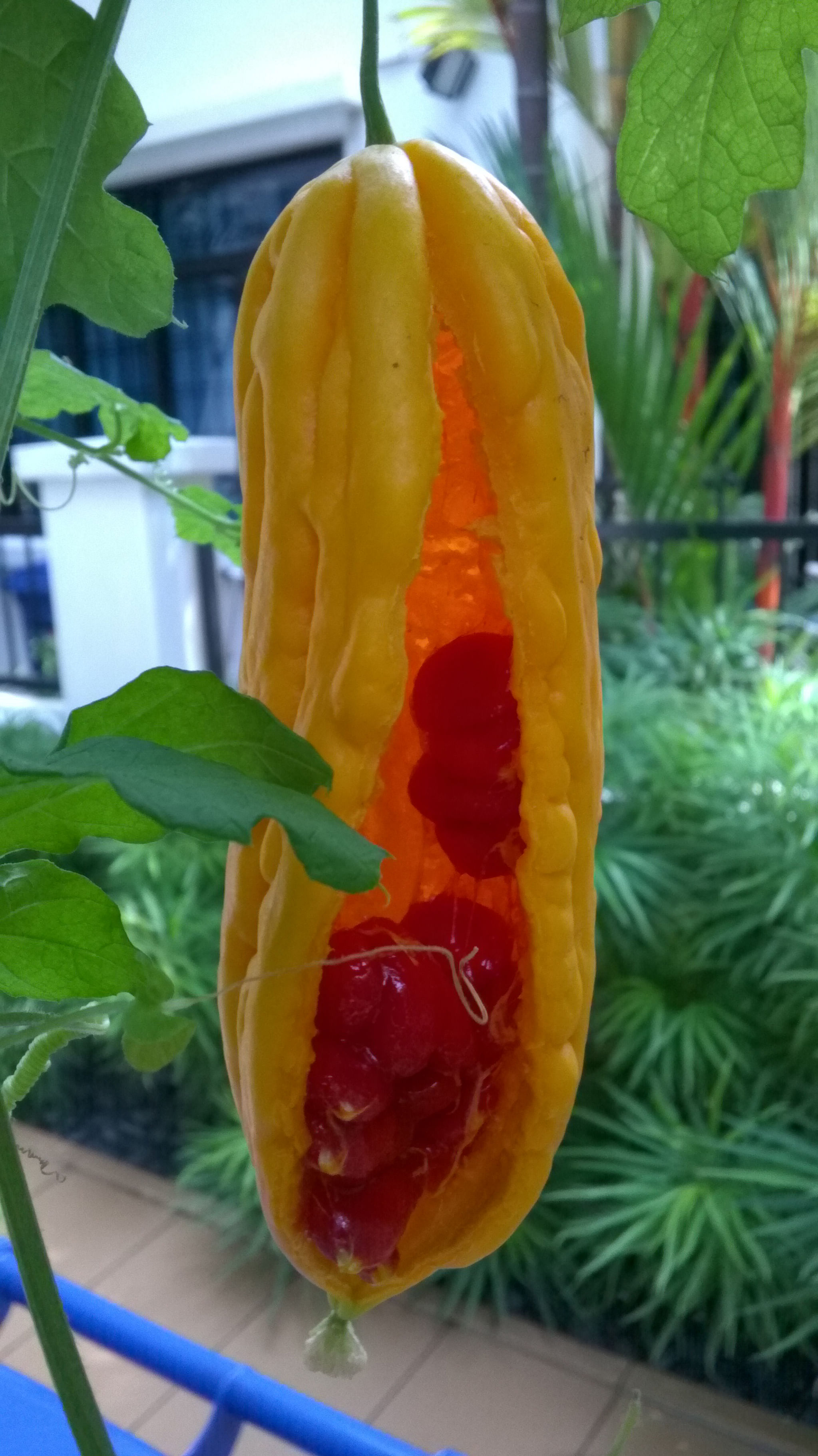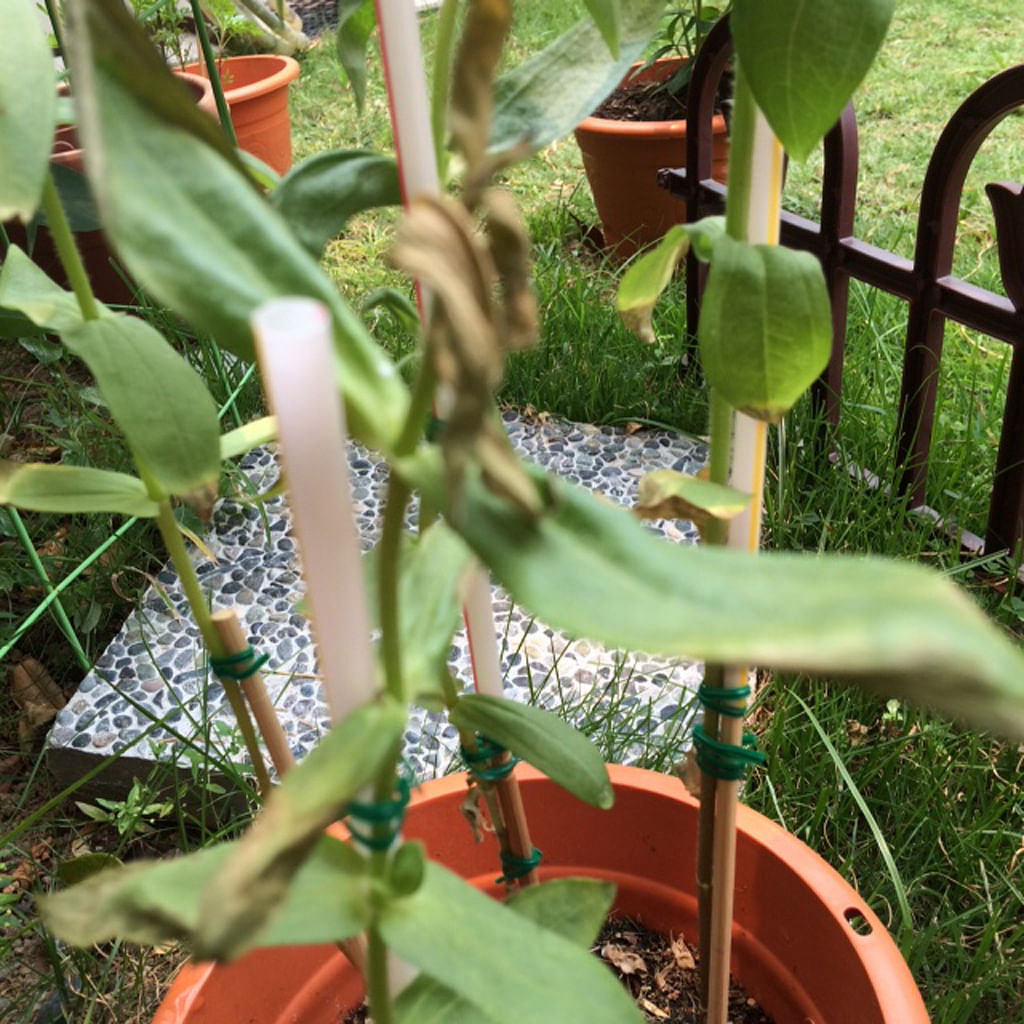Use homemade traps to catch snails and slugs
I have been planting flowering plants on a green patch in front of my house. Recently, I tried to plant sunflowers. But before they grew fully, they were eaten by insects. The creatures attacked only at night and only the sunflowers were eaten. Sometimes, the insects ate almost the whole plant, leaving just the main stem. I tried all sorts of insecticides, including malathion, but they did not work. What should I do?
Ronnie Sim
The damage as seen in the picture, where an entire leaf was eaten, could be caused by snails or slugs that often come out when it is dark.
This could explain why the contact pesticides you used were ineffective against these chewing pests.
Snails and slugs tend to be also more active during the rainy season and they go for new, tender growth of plants.
You may want to stay up to find out what is eating your plant.
Using chemical-based snail and slug poison is not effective when the plants are exposed to rain. They are also toxic for pets such as dogs.
A safer measure would be to set up homemade traps to attract these pests. Clear them the following morning.
Refer to the Internet on how to make such traps.

Ripe bittergourd splits to disperse seeds
Sometimes, my bittergourd turns green to orange quickly and opens up on its own (right). Why does this happen?
Goh Chwee Poh
Most people are familiar with the green, immature fruit sold in markets. Your picture shows a bittergourd fruit that has ripened and split open to disperse its seeds.
Most of the time, the red aril- covered seeds will slide out of the open fruit and fall to the ground. They usually germinate soon if they are not removed or attacked by pests or pathogens.
I believe you are hoping that the fruits might grow bigger, but they turn ripe instead. The size of the fruit depends on the growing conditions. Ensure the plant is well hydrated and fertilised so that it is robust enough to produce larger fruits.
The plant grows best under direct sunlight. You may want to let it focus its energy on producing a few big fruits by selectively removing other new, developing ones. Plants will also be less productive if they are grown in containers or pots.

Direct sunlight for Zinnia
Why do the leaves of my young Zinnia plant wilt even though the plant is placed in a shady spot? I water it regularly.
Evelyn Lim
Zinnia plants are sun-loving.
They should be placed in a location with direct sunlight for robust growth.
The symptoms could be due to a few reasons. Was the plant left exposed in a windy spot or near the ventilation shafts of an air- conditioner? These factors will dry the plant out and can lead to leaves wilting.
Also, when you fed the plant, did you follow the label's instructions? Excessive fertiliser can lead to fertiliser burn, which can have similar symptoms.
Sunny spot for aloe vera
Which type of soil is suitable for growing aloe vera - burnt soil or black soil?
Pauline Loke
The Medicinal Aloe, botanically known as aloe vera, is a drought- tolerant, succulent plant. Pick a spot where it can get direct sunlight for at least half a day. It prefers a moist but well-draining soil mix. Do not let its root zone dry out completely.
Burnt earth is made by heating clayey soil at high temperatures, which will produce a hard and slightly porous medium.
What counts as "black soil" is difficult to ascertain. Those sold at nurseries could be soil mixes that have been enriched with organic matter such as compost, which gives them a dark appearance and friable texture.
Depending on the growing conditions, you may need to mix various proportions of both to get the right balance of drainage and water retention capacity to grow your plant.

Tip: Outdoor but sheltered location is best for Bat Lily
The Black Bat Lily, botanically known as Tacca chantrieri, is a unique plant that produces very unusual, interesting-looking inflorescences. With some imagination, they look like bats in flight.
Bat Lilies, in general, are understorey plants that grow on the moist, shady forest floor with filtered sunlight at most.
They prefer well-drained soil that is moist and rich in organic matter. They also need some air circulation and high humidity to thrive.
Bat Lilies are best grown in a sheltered location in an outdoor garden where they are also protected from drying winds. They should never be allowed to dry out completely.
They can be challenging to grow in high-rise apartments as the environment can be low in humidity and windy.
• Answers by Dr Wilson Wong, a certified practising horticulturist and founder of Green Culture Singapore (www.greenculturesg.com). He is also an NParks- certified park manager.
• Got a gardening query? E-mail it with clear, high-resolution pictures of at least 1MB, if any, and your full name to stlife@sph.com.sg.

